 Operation and Maintenance
Operation and Maintenance Linux Operation and Maintenance
Linux Operation and Maintenance Disk IO performance optimization method for building a web server under CentOS 7
Disk IO performance optimization method for building a web server under CentOS 7Disk IO performance optimization method for building a web server under CentOS 7
Abstract: This article will introduce how to build and optimize the disk IO performance of a web server under the CentOS 7 operating system. By properly configuring the operating system and hardware parameters and using some technical means, the server's disk IO performance can be greatly improved, thereby improving the website's response speed and throughput.
- Optimize the file system
First, we need to optimize the file system of the server. In CentOS 7, the default file system for servers is EXT4, but it is not the most suitable file system for server applications. We can consider using the XFS file system, which is better at handling large files and a large number of small files.
When installing CentOS 7, we can choose manual partitioning and select the XFS file system as the file system of the root partition. If you have already installed CentOS 7, you can do this by reformatting the root partition and changing it to the XFS file system.
The command to install XFS is as follows:
yum install xfsprogs
The command to change the root partition to the XFS file system is as follows:
mkfs.xfs /dev/ sda1
- Configuring the disk scheduler
The disk scheduler determines the execution order of disk IO requests. Different disk schedulers have different performance impacts on different application scenarios and hardware configurations. In CentOS 7, we can choose to change the disk scheduler to improve the server's disk IO performance.
Common disk schedulers include CFQ, Deadline and NOOP. In server applications, deadline schedulers tend to have better performance. We can change the disk scheduler by modifying the following file:
vi /etc/udev/rules.d/60-schedulers.rules
Add the following content:
set cfq scheduler for sda
ACTION=="add|change", KERNEL=="sda", ATTR{queue/scheduler}="deadline"
Then, restart the server for the changes to take effect .
- Configuring RAID
RAID technology can improve disk IO read and write performance and fault tolerance by combining multiple disks into one logical drive. In CentOS 7, we can configure software RAID to achieve this purpose.
First, we need to install the mdadm tool:
yum install mdadm
Then, use the following command to create RAID 0 or RAID 10:
mdadm --create /dev/md0 --level=0 --raid-devices=2 /dev/sdb1 /dev/sdc1
After the creation is completed, we need to format and mount the RAID device:
mkfs.ext4 /dev/md0
mount /dev/md0 /mnt/raid
In order to automatically mount the RAID device when the system starts, we need to modify the following files:
vi /etc/fstab
Add the following:
/dev/md0 /mnt/raid ext4 defaults 0 0
- Use SSD
Solid State Drive (SSD) has faster reading and writing speeds than traditional mechanical hard drives. Therefore, when building a web server, if the budget allows, we can consider using SSD to improve disk IO performance.
The operating system and key applications can be installed on the SSD, while the data is stored on the traditional mechanical hard drive. This can reduce costs while ensuring reading speed.
- Use caching technology
Cache technology can convert disk IO read and write operations into memory operations, greatly improving the response speed. In CentOS 7, we can use tools such as Redis or Memcached to implement caching.
Taking Redis as an example, first we need to install the Redis server:
yum install redis
Then, we need to modify the following files to enable the caching function of Redis:
vi /etc/redis.conf
Find the following line and modify it:
maxmemory
maxmemory-policy noeviction
Change it to:
maxmemory 1GB
maxmemory-policy volatile-lru
Restart Redis for the modification to take effect.
Conclusion:
By properly configuring the file system, disk scheduler, RAID, using SSD and caching technology, we can effectively improve the disk IO performance of the web server under CentOS 7. By optimizing disk IO performance, we can improve the server's response speed and throughput, thereby improving user experience.
The above is the detailed content of Disk IO performance optimization method for building a web server under CentOS 7. For more information, please follow other related articles on the PHP Chinese website!
 centos用什么命令可查版本号Mar 03, 2022 pm 06:10 PM
centos用什么命令可查版本号Mar 03, 2022 pm 06:10 PM查版本号的命令:1、“cat /etc/issue”或“cat /etc/redhat-release”,可输出centos版本号;2、“cat /proc/version”、“uname -a”或“uname -r”,可输出内核版本号。
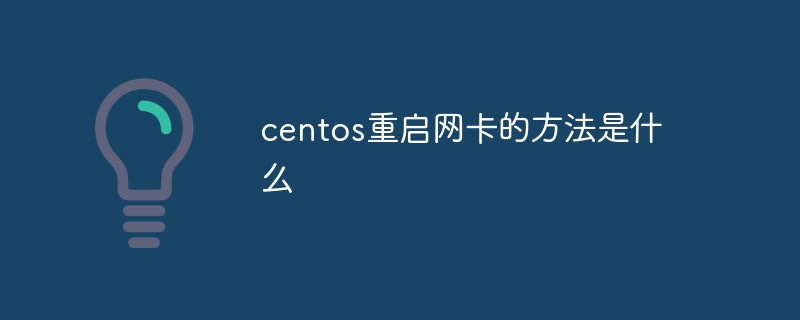 centos重启网卡的方法是什么Feb 22, 2023 pm 04:00 PM
centos重启网卡的方法是什么Feb 22, 2023 pm 04:00 PMcentos重启网卡的方法:1、对于centos6的网卡重启命令是“service network restart”;2、对于centos7的网卡重启命令是“systemctl restart network”。
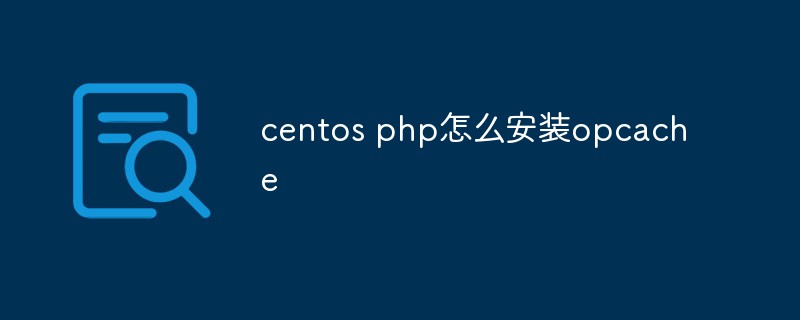 centos php怎么安装opcacheJan 19, 2023 am 09:50 AM
centos php怎么安装opcacheJan 19, 2023 am 09:50 AMcentos php安装opcache的方法:1、执行“yum list php73* | grep opcache”命令;2、通过“yum install php73-php-opcache.x86_64”安装opcache;3、使用“find / -name opcache.so”查找“opcache.so”的位置并将其移动到php的扩展目录即可。
 centos 怎么离线安装 mysqlFeb 15, 2023 am 09:56 AM
centos 怎么离线安装 mysqlFeb 15, 2023 am 09:56 AMcentos离线安装mysql的方法:1、将lib中的所有依赖上传到linux中,并用yum命令进行安装;2、解压MySQL并把文件复制到想要安装的目录;3、修改my.cnf配置文件;4、复制启动脚本到资源目录并修改启动脚本;5、将mysqld服务加入到系统服务里面;6、将mysql客户端配置到环境变量中,并使配置生效即可。
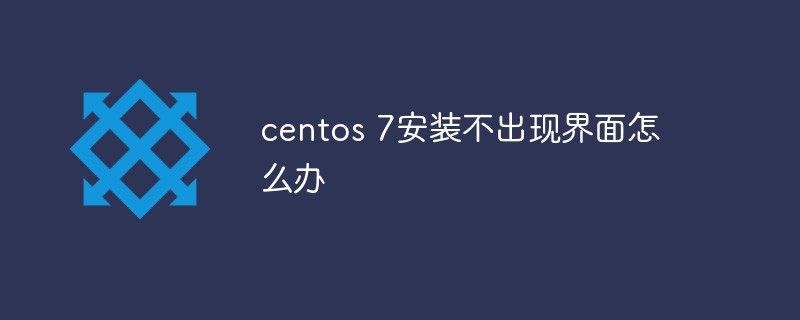 centos 7安装不出现界面怎么办Jan 03, 2023 pm 05:33 PM
centos 7安装不出现界面怎么办Jan 03, 2023 pm 05:33 PMcentos7安装不出现界面的解决办法:1、选择“Install CentOS 7”,按“e”进入启动引导界面;2、 将“inst.stage2=hd:LABEL=CentOS\x207\x20x86_64”改为“linux dd”;3、重新进入“Install CentOS 7”,按“e”将“hd:”后的字符替换成“/dev/sdd4”,然后按“Ctrl+x”执行即可。
 centos 怎么删除 phpFeb 24, 2021 am 09:15 AM
centos 怎么删除 phpFeb 24, 2021 am 09:15 AMcentos删除php的方法:1、通过“#rpm -qa|grep php”命令查看全部php软件包;2、通过“rpm -e”命令卸载相应的依赖项;3、重新使用“php -v”命令查看版本信息即可。
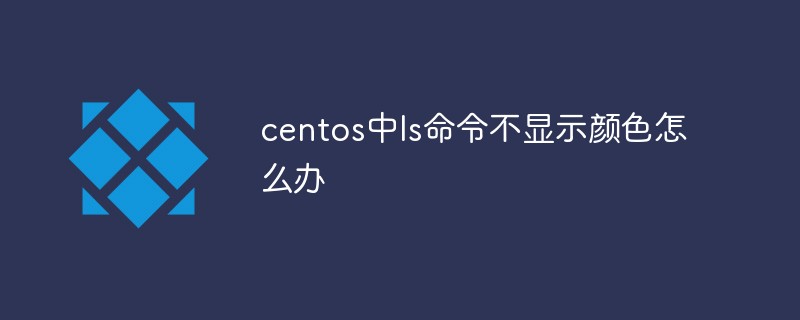 centos中ls命令不显示颜色怎么办Apr 20, 2022 pm 03:16 PM
centos中ls命令不显示颜色怎么办Apr 20, 2022 pm 03:16 PM方法:1、利用“vim ~/.bashrc”编辑用户目录(~)下的“.bashrc”文件;2、在文件内添加“alias ls="ls --color"”;3、利用“:wq!”命令保存文件内的更改;4、“exit”命令退出终端后重新连接即可。
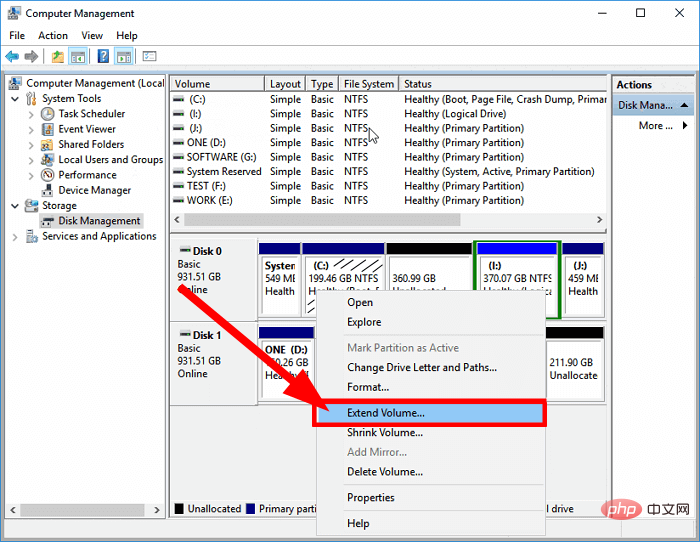 如何在 CentOS 9 Stream 上安装 NagiosMay 10, 2023 pm 07:58 PM
如何在 CentOS 9 Stream 上安装 NagiosMay 10, 2023 pm 07:58 PM我们的PC中有一个磁盘驱动器专门用于所有与Windows操作系统相关的安装。该驱动器通常是C驱动器。如果您还在PC的C盘上安装了最新的Windows11操作系统,那么所有系统更新(很可能是您安装的所有软件)都会将其所有文件存储在C盘中。因此,保持此驱动器没有垃圾文件并在C驱动器中拥有足够的存储空间变得非常重要,因为该驱动器拥有的空间越多,您的Windows11操作系统运行起来就越顺畅。但是您可以在磁盘驱动器上增加多少空间以及可以删除多少文件是有限制的。在这种情况下,


Hot AI Tools

Undresser.AI Undress
AI-powered app for creating realistic nude photos

AI Clothes Remover
Online AI tool for removing clothes from photos.

Undress AI Tool
Undress images for free

Clothoff.io
AI clothes remover

AI Hentai Generator
Generate AI Hentai for free.

Hot Article

Hot Tools

EditPlus Chinese cracked version
Small size, syntax highlighting, does not support code prompt function

VSCode Windows 64-bit Download
A free and powerful IDE editor launched by Microsoft

ZendStudio 13.5.1 Mac
Powerful PHP integrated development environment

MantisBT
Mantis is an easy-to-deploy web-based defect tracking tool designed to aid in product defect tracking. It requires PHP, MySQL and a web server. Check out our demo and hosting services.

SublimeText3 Chinese version
Chinese version, very easy to use






